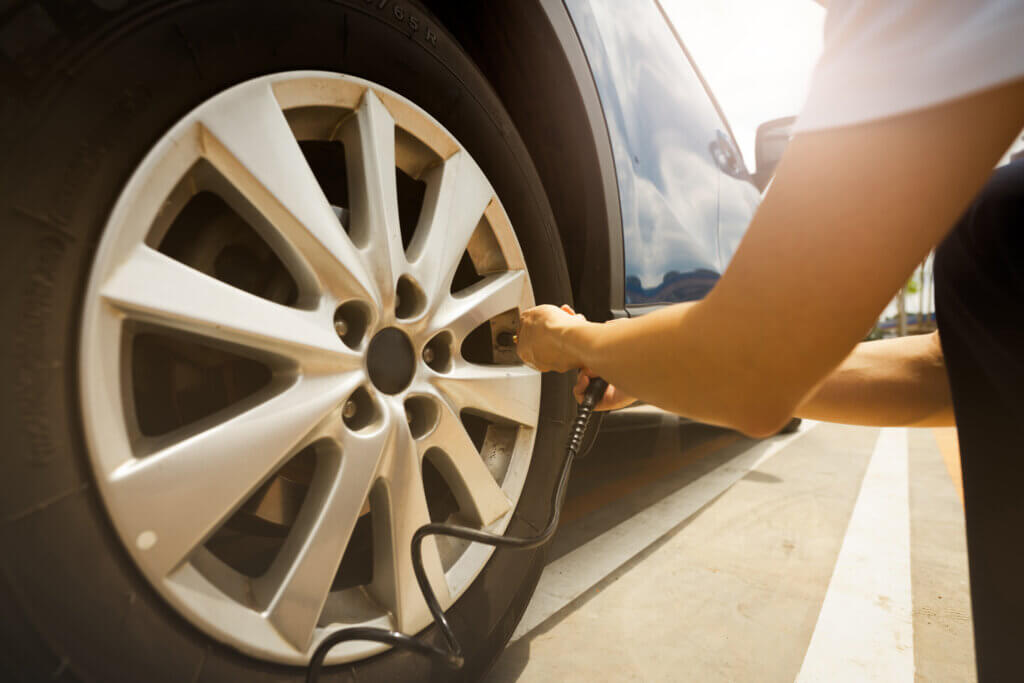How to Check Tyre Pressure: A Step-by-Step Guide for Safer Driving
Let’s face it—most of us forget about our tires until something goes wrong. But here’s the kicker: proper tyre pressure isn’t just a suggestion; it’s a safety essential. Whether you’re a new driver or a seasoned pro, learning how to check tyre pressure is a skill that saves money, boosts fuel efficiency, and keeps you safe on the road.
Why Correct Tyre Pressure Matters
Safety First
Underinflated tyres reduce grip, especially in wet conditions, increasing the risk of skidding or blowouts. Overinflation, meanwhile, makes tires rigid, leading to uneven wear and a bumpier ride. For tips on handling emergencies caused by tire issues, check out our guide on what to do during a flat tire.
Fuel Efficiency
The U.S. Department of Energy states that properly inflated tires improve gas mileage by up to 3%. That’s money back in your pocket! Pair this with our fuel-efficient driving techniques to maximize savings.
Tire Longevity
Correct pressure prevents premature wear. Think of it as a cheap insurance policy against buying new tires sooner than necessary. Learn more about when to replace tires to stay ahead of wear and tear.
Tools You’ll Need
Types of Tyre Pressure Gauges
- Analog (Dial): Durable and precise.
- Digital: Easy-to-read displays, ideal for beginners.
- Stick Gauges: Compact and affordable but less accurate.
Pro tip: Keep a gauge in your glove compartment for quick checks!
How to Check Tyre Pressure: A 5-Minute Guide
Step 1: Find Your Recommended PSI
Look for a sticker inside your driver’s door or the owner’s manual. Never use the number on the tyre sidewall—that’s the max pressure, not the ideal one.
Step 2: Check Tyres When Cold
The heat from driving increases pressure. Check tyres first thing in the morning or after they’ve rested for 3+ hours.
Step 3: Use the Gauge Correctly (H3)
- Remove the valve cap.
- Press the gauge firmly onto the valve.
- Note the reading.
- Repeat for all tyres (don’t forget the spare!).
Step 4: Adjust as Needed
Add air at a gas station or use a portable pump. Release excess air by pressing the valve stem pin gently.
Common Mistakes to Avoid
- Ignoring the Spare Tyre: A flat spare defeats its purpose.
- Relying Solely on TPMS: Your Tire Pressure Monitoring System alerts you only when pressure is 25% below recommended—far too late.
- Overinflating in Winter: Cold air contracts, so check pressure more often in colder months. For seasonal tips, explore our winter driving tips.
Maintaining Optimal Pressure
Monthly Checks
Set a calendar reminder! Consistency prevents surprises.
Seasonal Adjustments
Temperature swings affect the pressure. For every 10°F change, tyre pressure shifts by 1-2 PSI.
When to Visit a Professional
If you notice:
- Rapid air loss
- Uneven tread wear
- Persistent warning lights
…it’s time for expert help. Regular inspections are part of smart car maintenance.
Drive Confidently with Well-Maintained Tires
Checking tyre pressure isn’t glamorous, but it’s a small habit with huge rewards. Ready to sharpen your driving skills? Explore Epic Driving School’s courses for hands-on lessons in vehicle safety and maintenance. After all, a well-prepared driver is a safe driver!
